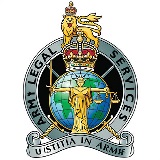*/
It’s an increasingly popular method of appointing counsel, so how will you answer the call to tender and establish yourself as the irresistible choice? Douglas McPherson explains
While I’ve never met anyone who actually enjoys the tendering process, the truth is that for most chambers regardless of size or specialism, formal procurement is becoming an increasingly popular method of appointing counsel.
Whether the calls for tender you receive are from law firms looking to fix costs and derive more value, public entities trying to satisfy ever tighter budgets or corporate clients looking to take advantage of direct access, at some point soon you will need to get better at tendering.
The good news is – as with any other aspect of marketing and business development – there is a proven process that will improve your tender submissions even if you feel you are closer to ‘well-oiled machine’ than ‘just starting out’.
Before you even consider responding to a call for tender ask yourself one vital question: Can we really win this?
Tenders take up an enormous amount of time and resource so unless you are absolutely sure you can meet all of the requirements laid out in the call for tender (or lot/s you want to bid for), you should politely decline the opportunity before wasting valuable resources on a bid you simply can’t win.
Sometimes vanity can get in the way but you can’t afford to let that happen. The inevitable ‘thanks but no thanks’ from the recipient will put people off collaborating when future opportunities come into chambers; those could be the ones you are able to win.
If you are happy that you do have all of the skills and experience being asked for, take some time out to go through the call for tender with the team who’ll be putting your submission together.
While this may sound like yet another imposition on your time I can assure you those chambers that do take the time (and it’ll only take an hour and you can do it over an early breakfast or at the end of the day if that’s easier to fit in and around clients and court) are the people who win the most tenders. It’s only when you genuinely understand what you’re being asked for that you can maximise the quality and relevance of your response.
Jot down the key points under each heading on a piece of paper so you have a route map to follow.
Once you have listed exactly what is required for your submission you can start finding the right examples. Which cases have you done in each area? Who did them? And more detail on how they approached those cases if some degree of methodology had been requested.
Much of that information will already have been collected for previous tenders, your website or other marketing materials. If there are cracks to fill, then that should be the responsibility of the barristers involved in the case concerned. Their understanding of the case and its outcome will provide a much more powerful summary and because they will have the information to hand/mind, they will be quicker to pull it together.
Once you have all this information gathered, the team running the tender should meet up to make sure all of the items on the list compiled during steps 2 and 3 have been addressed.
In some instances there may be more to cover than legal provision (communication, training and knowledge sharing are specific examples that we see cropping up from time to time). It may be worth tasking your clerks or marketing team with completing these aspects – after all, they are more likely to have been involved most closely during previous delivery of those types of ‘non-legal’ requirements.
All too many chambers still front-load their tender submissions with a potted history of chambers and a snap shot of their members. Don’t! Write for the reader, not for yourselves, and again you will get the adjudicators onside from the off.
Start by qualifying that you understand what they are looking for. Then set out the type of skills and experience the successful chambers should be able to demonstrate. Then explain why you are the chambers than can meet those criteria. This is where the list you made during steps 2 and 3 pays dividends. You’ll be able to acknowledge and meet each criterion then offer a real-life example of how you have successfully advocated in similar circumstances in the past.
Now you can add your history and team sheet/s… but please as appendices along with more detailed summaries of relevant cases. That way, the reader can decide if they want/need to read them without being forced to wade through them whilst looking for what they do need to find.
Think about your cover. Is there an eye-catching image? Have you made it look like your other marketing materials for continuity? Is all the required contact, authorship and confidentiality information easily visible? The buying process starts as soon as the PDF/envelope is opened so give yourself the best possible chance by having a cover that grabs attention.
Within the document itself (unless there are heavy space constraints) don’t be afraid to space your text out or employ wider margins than you’d usually use. The more white space, the easier your final document will be on the eye. The easier your document is to read, the more likely it is that your key points will be absorbed.
Charts and images break up the text and make it easier to read but also takes care of those who prefer to take in facts in ways other than words.
While I’ve never met anyone who actually enjoys the tendering process, the truth is that for most chambers regardless of size or specialism, formal procurement is becoming an increasingly popular method of appointing counsel.
Whether the calls for tender you receive are from law firms looking to fix costs and derive more value, public entities trying to satisfy ever tighter budgets or corporate clients looking to take advantage of direct access, at some point soon you will need to get better at tendering.
The good news is – as with any other aspect of marketing and business development – there is a proven process that will improve your tender submissions even if you feel you are closer to ‘well-oiled machine’ than ‘just starting out’.
Before you even consider responding to a call for tender ask yourself one vital question: Can we really win this?
Tenders take up an enormous amount of time and resource so unless you are absolutely sure you can meet all of the requirements laid out in the call for tender (or lot/s you want to bid for), you should politely decline the opportunity before wasting valuable resources on a bid you simply can’t win.
Sometimes vanity can get in the way but you can’t afford to let that happen. The inevitable ‘thanks but no thanks’ from the recipient will put people off collaborating when future opportunities come into chambers; those could be the ones you are able to win.
If you are happy that you do have all of the skills and experience being asked for, take some time out to go through the call for tender with the team who’ll be putting your submission together.
While this may sound like yet another imposition on your time I can assure you those chambers that do take the time (and it’ll only take an hour and you can do it over an early breakfast or at the end of the day if that’s easier to fit in and around clients and court) are the people who win the most tenders. It’s only when you genuinely understand what you’re being asked for that you can maximise the quality and relevance of your response.
Jot down the key points under each heading on a piece of paper so you have a route map to follow.
Once you have listed exactly what is required for your submission you can start finding the right examples. Which cases have you done in each area? Who did them? And more detail on how they approached those cases if some degree of methodology had been requested.
Much of that information will already have been collected for previous tenders, your website or other marketing materials. If there are cracks to fill, then that should be the responsibility of the barristers involved in the case concerned. Their understanding of the case and its outcome will provide a much more powerful summary and because they will have the information to hand/mind, they will be quicker to pull it together.
Once you have all this information gathered, the team running the tender should meet up to make sure all of the items on the list compiled during steps 2 and 3 have been addressed.
In some instances there may be more to cover than legal provision (communication, training and knowledge sharing are specific examples that we see cropping up from time to time). It may be worth tasking your clerks or marketing team with completing these aspects – after all, they are more likely to have been involved most closely during previous delivery of those types of ‘non-legal’ requirements.
All too many chambers still front-load their tender submissions with a potted history of chambers and a snap shot of their members. Don’t! Write for the reader, not for yourselves, and again you will get the adjudicators onside from the off.
Start by qualifying that you understand what they are looking for. Then set out the type of skills and experience the successful chambers should be able to demonstrate. Then explain why you are the chambers than can meet those criteria. This is where the list you made during steps 2 and 3 pays dividends. You’ll be able to acknowledge and meet each criterion then offer a real-life example of how you have successfully advocated in similar circumstances in the past.
Now you can add your history and team sheet/s… but please as appendices along with more detailed summaries of relevant cases. That way, the reader can decide if they want/need to read them without being forced to wade through them whilst looking for what they do need to find.
Think about your cover. Is there an eye-catching image? Have you made it look like your other marketing materials for continuity? Is all the required contact, authorship and confidentiality information easily visible? The buying process starts as soon as the PDF/envelope is opened so give yourself the best possible chance by having a cover that grabs attention.
Within the document itself (unless there are heavy space constraints) don’t be afraid to space your text out or employ wider margins than you’d usually use. The more white space, the easier your final document will be on the eye. The easier your document is to read, the more likely it is that your key points will be absorbed.
Charts and images break up the text and make it easier to read but also takes care of those who prefer to take in facts in ways other than words.
It’s an increasingly popular method of appointing counsel, so how will you answer the call to tender and establish yourself as the irresistible choice? Douglas McPherson explains

By the Chartered Governance Institute UK Ireland

Q and A with Major Susie Brooke, Legal Officer in Army Legal Services

Have you considered being a barrister in the British Army? Here’s an insight into a career in Army Legal Services

Clare describes her journey from Crown Prosecution Service legal trainee to Senior Crown Prosecutor, a typical ‘day in the life’ and the inspiration she draws from her career

What's it like being a legal trainee at the Crown Prosecution Service? Amy describes what drew her to the role, the skills required and a typical day in the life

Barristers can learn more about the varied arenas in which their mediation skills can be deployed at the Civil Mediation Council Annual Conference on 6 and 7 November 2024